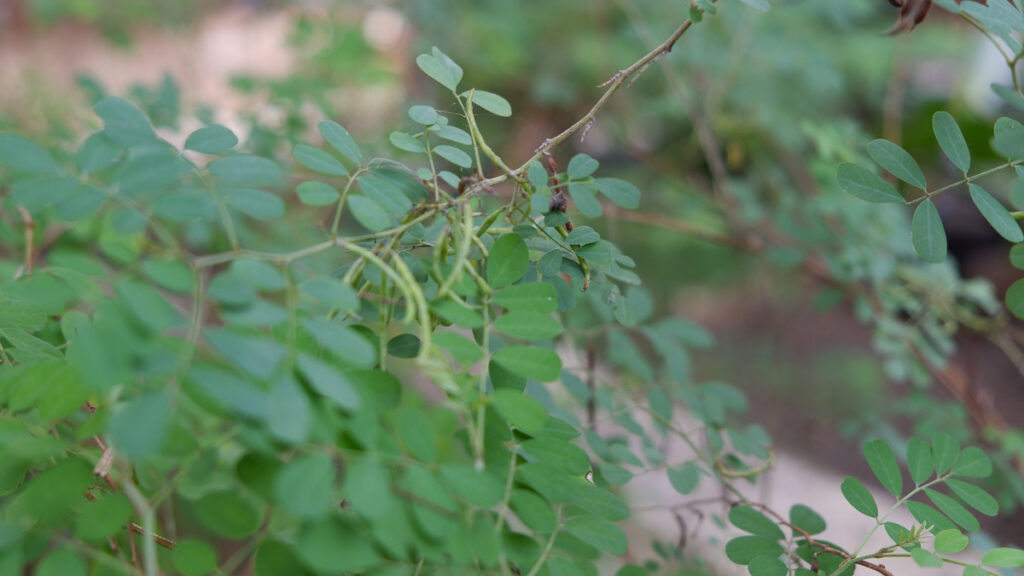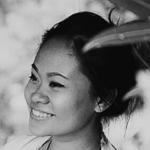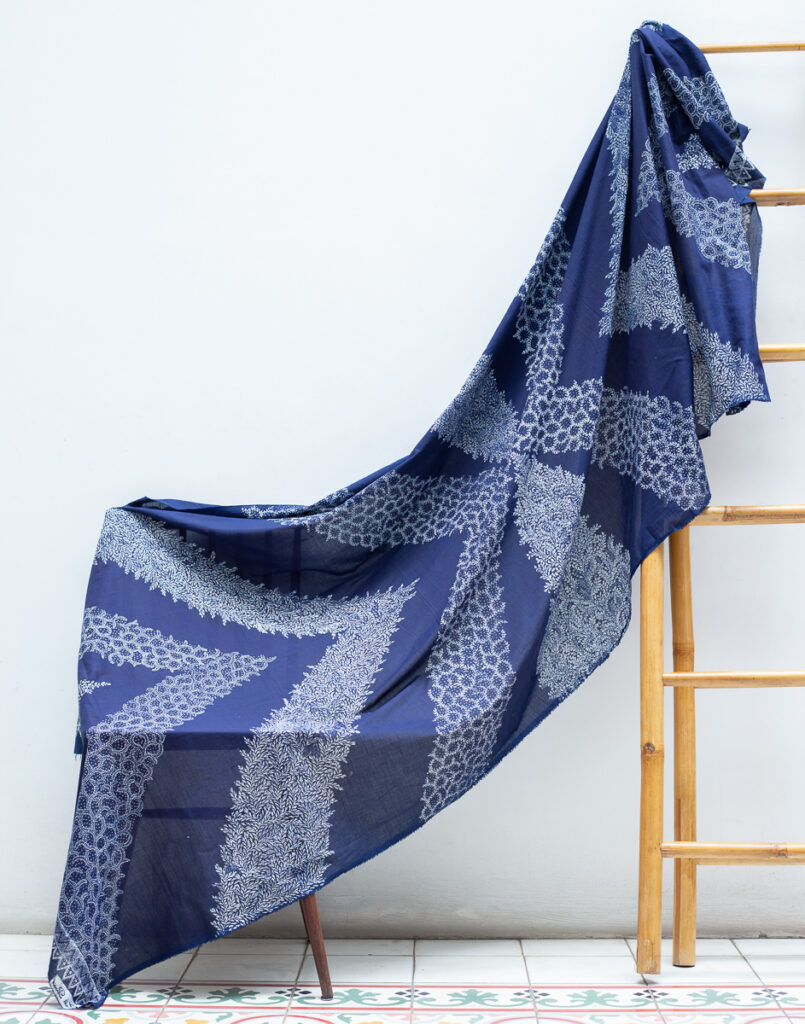
Hanny Kusumawati profiles master batik artist Zahir Widadi, who preserves the local wisdom of natural-dyed batik from his modest home workshop in Pekalongan.
(A message to the reader.)
A lifetime affair with natural dye
Zahir Widadi, a renowned batik artist and anthropologist, stumbled upon rows of Indigofera plants wildly growing in and around the bushes along the west side of the North Coast of Java many years ago.
This was how his lifetime affair with Indigo and natural-dyed batik started.
“Indigofera sprouted from the region of Kendal and Batang, to the city and region of Pekalongan, Pemalang, and Tegal,” said Zahir, who serves as the Dean of Batik faculty in the University of Pekalongan and the former Director of Batik Museum in Pekalongan.

As the quality of your Indigo paste is largely determined by the state of the Indigofera plant when it is harvested, you need to find the perfect time for harvesting. Find an Indigofera plant that is blossoming with pink flowers—usually around 3-4 months since it is planted.
Indigofera plant was originally brought by a trading company, VOC (Verenigde Oostindische Compagnie), to Java, as an export commodity. In the seventeenth century, the world wanted more of indigo—the plant that gives a deep and vibrant colour of blue.
As a result, the price of indigo went up to be an equivalent of gold; hence, the plant was once dubbed “The Blue Gold”.
The hidden blue in Javanese batik
Many people are curious about the blue of indigo in Javanese batik, which is mostly tinted with a brownish and yellow hue from the bark of the soga tree. However, Zahir explained that recent findings have shown that Indigo is the most subtle solution that can reach and penetrate even the smallest fibre of yarns.
“Thus, it was possible that before dyeing/colouring a batik cloth, our ancestors dyed the fabric blue with indigo first,” Zahir said. “This process enables other secondary or tertiary colors to be absorbed better by the fibre. Indigo and its tiny molecules can penetrate fabrics with the tightest fibres and binds other colors that follow.”
It is no wonder, then, that the first step of batik making in the kingdom of Solo and Yogya was called mbironi—or blue-ing (literally translated into “making it blue”).
“This process was known to our ancestors way before we could see molecules through a microscope. However, since indigo is not a native plant from Java, some political reasons might cause the kingdom of Solo and Yogyakarta to hide the blue underneath with ‘native colours’ like yellow and brown,” added Zahir, who likes to call himself a “batikologist”.
The 100% natural indigo dyeing process
Zahir Widadi believes that indigo solution is best to be kept 100% natural, containing only all-natural ingredients. Zahir created his Indigo-dyed batik with natural malam (wax), made of the sap from a pine tree, a resin from dammar gum, and beeswax; coconut sugar reducing agent, and tapioca starch solution.
“Since the indigo solution in itself is already a natural dye, I think it would be unfortunate to mix it with chemicals as reduction agents. I believe it would be best to have a piece of batik cloth that is made with an all-natural dye—without any synthetic materials like hydro-sulphite or caustic soda—especially because there are some plant-based natural reducing agents we can work with,” said Zahir.
Indeed, it takes more time to create an Indigo solution with a natural reducing agent. It will take up more or less 12 hours to a few days to get your all-natural indigo solution ready, while you can get a solution ready in only 3-5 minutes with synthetic reducing agents. The overall cost of using a natural reducing agent is also much higher.
However, an indigo solution that is made from all-natural ingredients can last months or even years longer than the solutions mixed with synthetic chemicals or other non-natural ingredients. The solution of the latter type can deteriorate quickly and must be used up immediately.

For his indigo-dyed batik, Zahir Widadi mostly uses cotton or silk as they both absorb natural dyes really well. Beforehand, the fabric needs to be washed by soaking and lathering it with a mix of water, peanut oil, and rice straw ashes. Batik artists, natural-dyed enthusiasts, researchers, university students, fabric/textile designers, and batik collectors from all around the world frequently visited his workshop (that is set up in the front, side, and backyard of his humble abode in Pekalongan), to learn the ancient wisdom and technique of natural-dyed batik.
How to differentiate between the two?
“Solutions with a natural reducing agent will have a brownish-yellow colour, while synthetic ones will have a bluish colour,” Zahir gave us a hint. “This can clearly be seen inside the vat—the container of Indigo solutions where you dip your cloth.”
Award-winning pattern: Tanahan
In 2018, Zahir Widadi received the World Craft Council Award of Excellence for Handicrafts. The award was given for his Indigo-dyed batik with the signature Tanahan (earth) pattern.
In traditional batik, Tanahan (earth) ornamental pattern is usually treated as a second-class ornamental variety. It was “hidden” behind the splendor of Klowongan (main design’s outline); that dominates a piece of batik cloth. Zahir Widadi, though, decided to honor Tanahan as the centerpiece of his design, giving it a spotlight where it doesn’t need to be hidden.
“I brought together the natural dye of indigo plants with a variety of ornamental plants from nearby areas. In my opinion, this is like a match made in heaven, plants meeting plants,” said Zahir. “Up to date, there are hundreds of Tanahan patterns I’ve documented from traditional batik artists that I have met over the past 12 years. Previously, these Tanahan patterns were only kept in their hearts for decades.”
Originally, the Tanahan ornamental patterns taken by the batik makers were inspired from the forms of small plants and flower buds in the area where they lived, such as ferns or manggar (the flower pistil of a coconut palm tree).
Tanahan demands the highest skill in hand-drawn batik-making with canting. To make the Tanahan background, batik artists use the canting (a pen-like tool used in making batik) in the smallest size, number 0.5.
- Tanahan Sinaran pattern was inspired by the traditional batik motif called ‘lidah api’ (flame); which originally represents the ‘flame’ in one’s soul to get what one desires. Amid these intricate Tanahan patterns, we can also find blank blue spaces called ‘lubang angin’ (vent). Vents like these require a high-level mastery, especially when the batik cloth is about to be dyed in a natural Indigo solution. Batik workers must be careful during this process because the blue color of the vent (which is easily visible on the batik cloth) must appear clean, clear, and even.
Natural-dyed batik: preservation & education
Today, Zahir Widadi oversees a company, KELIR, where he gathered people with genuine interests towards batik, natural-dye, traditional knowledge, folk art, and intangible cultural heritage.
“I envision something that functions like a campus; an open space where we conduct workshops, scientific research, cultural documentation, and conservation efforts related to our ancestors’ wisdom on batik and natural dye,” said Zahir. “As educators and academicians, we have the responsibility to preserve our ancestors’ wisdom, techniques, and knowledge into a scientific module or syllabus. The challenge is, we also need to approach it with an alternative style. We can’t make it too rigid.”
He believes that to preserve the wisdom of Indonesian natural-dyed batik, everyone needs to start paying attention to a sustainable ecosystem for Indonesian batik, from top to bottom.
“It’s not only about batik designers or artists, but also the plants and the environment, the water sources, the farmers, the batik workers, the maker of canting and batik stamps, the fabric industry, the documentation and research about Indonesian batik, and many more. Plus, don’t forget about batik students: who will preserve our batik culture for generations to come. There are so many things we can do about this issue. Now, I am doing my part.”
Authors
 Hanny Kusumawati is an Amsterdam-based communications consultant who is passionate about helping kind businesses create meaningful content, experience, and activities, both on and off the Internet. Mainly, she chooses to work on projects involving conscious hospitality, alternative lifestyle, and experiential learning. KELIR is one of her passion projects. Hanny is also a published writer, a journaling enthusiast, and a part-time illustrator. She loves listening to people telling their stories and has a soft spot for everything handmade.
Hanny Kusumawati is an Amsterdam-based communications consultant who is passionate about helping kind businesses create meaningful content, experience, and activities, both on and off the Internet. Mainly, she chooses to work on projects involving conscious hospitality, alternative lifestyle, and experiential learning. KELIR is one of her passion projects. Hanny is also a published writer, a journaling enthusiast, and a part-time illustrator. She loves listening to people telling their stories and has a soft spot for everything handmade.
Zahir Widadi is a renowned batik artist & anthropologist with a passion for philosophy behind batik culture and natural dye. In 2018, he became the recipient of the World Craft Council Award of Excellence for Handicrafts, awarded for his indigo-dyed batik with his signature Tanahan pattern. Zahir Widadi is also the Dean of Batik faculty at the University of Pekalongan and the former Director of the Batik Museum in Pekalongan. Today, he is supervising a natural-dyed company, KELIR, where he gathered people with genuine interests towards batik, natural-dye, traditional knowledge, folk art, and intangible cultural heritage.




Comments
I would like to learn how you prepare the natural colour and how you make batik